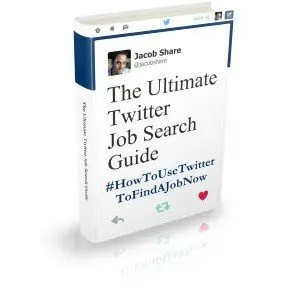To be hired by a specific company, learn the career path most other people have followed to be hired by that company.
This a guest post by Jonathan Degani. If you’d also like to guest post here on JobMob, follow these guest post guidelines.
When I was left business school, I naturally though that I'd look over the classifieds for a few days, apply to maybe ten jobs, have three accept me and then I'd choose one.
Several months later, I realized I was wrong.
What I thought I should be doing
I was sending out thousands of resumes a day (thanks, Jobmaster and Jobnet!) and getting absolutely nowhere. I actually woke up one morning thinking, “maybe no one is responding because I accidentally wrote ‘f— you' on my resume”. I never use that word, but maybe I wrote it by accident. So I checked my resume and lo and behold, no ‘f— you' written anywhere.
There must have been another problem.
I called my old business school for some help with my job search and they directed me to an alumnus who had graduated several years before me and currently works at KPMG. I then figured “ah, here is some proteksia!” I called her and she said she'd help, although it was during a recession so her ability to help out was very limited.
Then she gave me the most practical piece of advice I received during my job search.
What I really should have been doing
The alumnus told me that in order to get a job, I'll have to learn the dynamics of each company and find out the career path that people must take to start working.
What does that mean?
In KPMG, the new blood enters either (1) as a CPA or (2) in transfer pricing. From then on, I focused my networking (via LinkedIn, Facebook) to finding people who worked in transfer pricing (see my previous guest post about how to meet these people.) When I spoke to someone from Osem, I found out that in order to work there you have to start out in the PR department. Nielsen's workers all start out in marketing analysis.
Typical career paths
This is not just limited to the business arena:
- Teachers at most schools get their “in” as substitute teachers.
- Principals are usually former teachers.
- Social event planners often start out at non-profit organizations (as do a slew of other positions).
- Graphic designers usually start out doing small jobs to build a portfolio.
- Writers try to get their work published in as many small publications as possible.
If you know where you want to go, the best thing you can do is contact someone who is there and learn the path, down to step one. Then focus your job search on getting to that one pivotal step.
Career path lessons
- If you want to get to your dream job, you need to have not only the credentials, but the relevant experience that can only come from following the career path of that job.
- When it comes to courting a job in larger firms, learn the career path and focus your networking on people in the entry level position
- When it comes to courting jobs in smaller firms, you're going to have to stick with answering wanted ads en masse
This article is part of the 3rd Annual JobMob Guest Blogging Contest. If you want Jonathan Degani to win, share this article with your friends.
Subscribe to JobMob via RSS or email and follow me on Twitter for the best career path insight to your dream job.




Pingback: targeted job search « Shomer Shekalim – ₪
Great advice.
Pingback: Interns Over 40
Pingback: JobsBoston
Pingback: Cecile Peterkin
Pingback: Jose Angel Espinoza
Pingback: Professional Techies
Pingback: José Jesús Pérez A.
Pingback: Renato Pessanha
Pingback: David McQueen
Pingback: Announcing the Winners of The 3rd Annual JobMob Guest Blogging Contest | JobMob
Pingback: Lisa McCallister
Pingback: Antoinette Robinson
Interesting take on networking your way into a new job.
I was going to make almost the same comment Leslie made.
Pingback: 15 Nerve-racking Job Interview Questions and How to Answer Them | JobMob
Pingback: 🏃 7 Ways To Speed Up Your Job Search Results